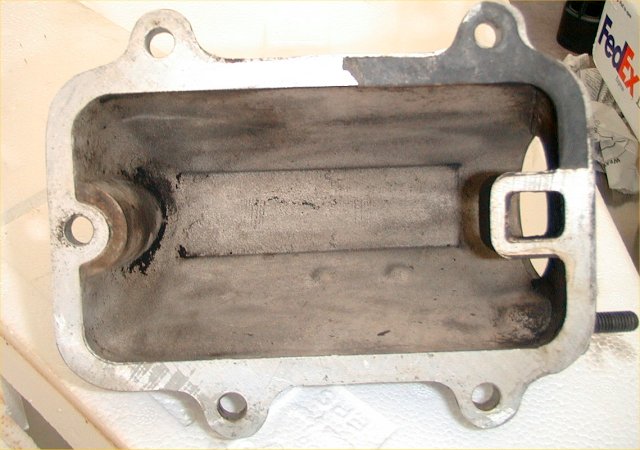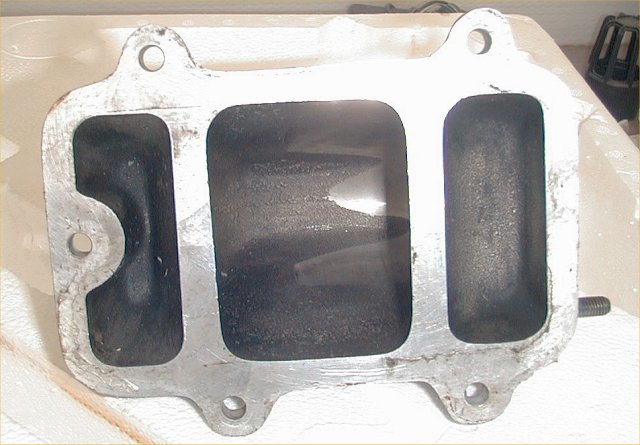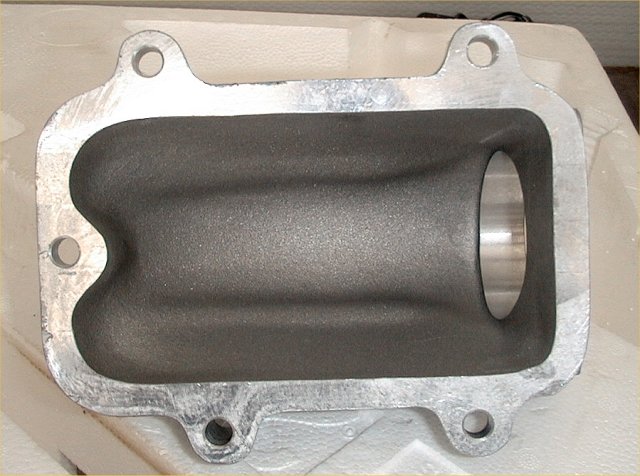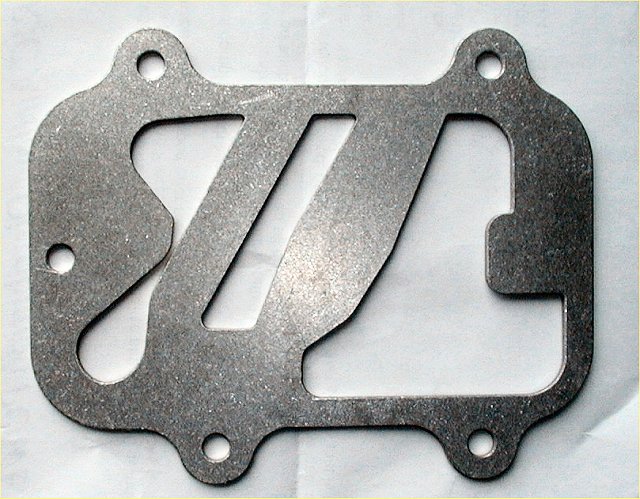
Plenum Comparison

From left to right-Stock, Hemco, PTE
Note the difference in height and shape.

This is the stock plenum interior. Note that it is fairly symmetrical and it is easy to envision that air would go straight to the rear and down explaining why the rear cylinders get more air and run leaner in a stock configuration.

This is the interior of the Hemco plenum. Note that the interior volume is much smaller and centered over the middle of the intake. As noted in the tests conducted by RJC Racing, this does a better job of equalizing distribution than does the stock configuration but it still leaves a lot to be desired. The small volume and opening of the plenum made it impossible to design a Power Plate that will effectively provide balanced air distribution as per RJC.

This is the interior of the PTE version. As the first picture indicated, the PTE plenum is taller in the front and lower in the rear. There are also a pair of ribs molded along the sides . This picture is a bit of an optical illusion as it almost looks like a flash light is laying inside the plenum at first glance due to the interior contours.
Combined with a Power Plate, this plenum provides almost perfect distribution which should save some head gaskets as the boost is pushed to the limit.

This is the RJC Racing Power Plate that goes with the PTE Plenum shown above. Flow tests show that contrary to the appearance of the Plate, it does not serve as a restrictor. This has been confirmed with pressure readings taken above and below the plate.
Flow tests, dyno tests, track tests, and EGT tests show that the Plate functions as advertised and was used on 9.90 stock block TSM cars at the Nats.
The flow comparisons on the RJC site show deviation from average flow. This means the flows from all six cylinders were totaled and divided by six to obtain an average flow number. Then each cylinder was compared to the average and a percent deviation computed. Without and with the Plate are shown.
Dave Bamford, who ran 9.90s at the 2003 Nats in TSM, did the EGT measurements using aluminum heads, PTE Plenum, and matching Power Plate. Following are RJC's flow deviation numbers, Dave's EGTs, and EGT deviation from average.
cyl# PTE 70 mm PTE+PP EGT's PTE EGT's PTE+PP
1 -56% -3% 1702 1660
3 +36% -3% 1688 1640
5 +27% +2% 1759 1647
2 -59% +2% 1736 1704
4 -2% +2% 1744 1707
6 +36% -2% 1802 1682
It is interesting to note that the PTE plenum by itself does not do an excellent job of evening distribution. Combined with the PP, it is an entirely different story.